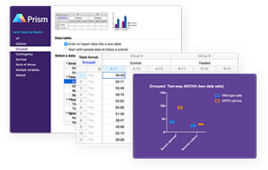Modulation Adulation
High-speed wireless data transmission technology
Bill Weaver, Ph.D.
A colleague recently stepped into my office to tell me how happy he was with the new wireless network he bought for his home. Putting on my best Cliff Claven impersonation, I asked, “So, you bought one of them Wi-Fi IEEE 802.11b wireless local area networks, huh?” He replied that for a couple more dollars the salesman sold him a new “g” system. I hopped on Google to see what he was talking about and soon learned of the nascent IEEE 802.11g standard based on Orthogonal Frequency Division Multiplexing (OFDM). To a huge technoweenie such as myself, OFDM sounded too juicy a term to gloss over, so I decided to do a little digging.
The overall goal of a local area network (LAN) is to transmit information between locations. A wireless LAN (WLAN) a.k.a. local area wireless network (LAWN) transmits data via broadcast electromagnetic radiation. This gives notebook users the freedom to relocate and handheld or tablet users the ability to roam and enter/exit the network dynamically. However, trading cables for antennae transfers the associated transmission problems from electronics to those of spectroscopy. Early last century, naval vessels used a signal lamp as a light-based wireless transmission system. The transmitting party would open and close the shutter of a spot light while pointing it in the direction of the receiving ship. The on-off pattern of light pulses would be received and decoded into the original message. In this fashion, the amplitude of the information carrier (visible light having a frequency ca. 600 THz) would be modulated at the signaling rate (typically 2-12 Hz). The maximum signaling rate was limited by the skills of the transmitter and receiver while the transmission distance depended on line-of-sight visibility.
Indoor digital networking areas such as offices and laboratories most likely contain furniture, walls, and other obstacles that do not transmit visible frequency light, so radio (MHz) and microwave (GHz) frequency light is used as the carrier. Since the “public airwaves” have economic value, WLAN devices utilize three unlicensed frequency regions collectively called the Industrial, Scientific and Medical (ISM) bands in the regions of 900 MHz, 2.4 GHz, and 5.8 GHz. Although not immediately absorbed by building materials, these frequencies are readily reflected and the carrier waves can arrive at the receiving antenna at various times resulting in destructive interference known as “fades.” To minimize fades, the signal can be spread across the entire band of carrier frequencies in such a way that the amplitude of the few frequencies that do fade can be recovered through equalization with the remaining, unattenuated frequencies. This “spread spectrum” technique also reduces the signal power in any one frequency, reducing the amount of interference between transmitters. IEEE 802.11b uses a carrier in the 2.4-GHz ISM region and the Direct Sequence Spread Spectrum (DSSS) technique to distribute the signal across the entire band. Each independent communication link uses a unique DSSS spreading pattern so multiple transmitters can use the same band without interference.
In addition to the destructive interference caused by reflections, the antenna also can receive complete echoes of the transmitted data. It is difficult to differentiate between an echo and the subsequent signal packet, so time is allotted for the signal to “ring-down” before the next packet is transmitted. This limits the maximum transmission rate of 802.11b to 11 Mbps. In contrast to the single broad-carrier DSSS technique, 802.11g uses OFDM to divide the band into 52, non-overlapping (orthogonal) “subcarriers.” Four of the subcarriers are used as internal references known as “pilot tones” and the remaining channels are used to carry 48 signal streams simultaneously. This parallelism permits the signal duration to be about 44 times longer than 802.11b, providing ample time for echoes to dissipate. The lower interference and parallel architecture permits 802.11g to attain data transfer rates up to 54 Mbps. OFDM was developed in 1966 but relies on the availability of modern high-speed digital signal processing (DSP) chips to modulate and demodulate the signals into the subcarriers. As DSP technology continues to improve, the number of subcarriers can increase; at least until we run out of letters to place at the end of 802.11.
Bill Weaver is an assistant professor in the Integrated Science, Business and Technology Program at LaSalle University. He may be contacted at [email protected].




